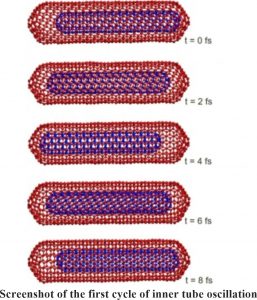Carbon Nanotube Materials Reduce Vibrations in Automobiles: Researchers
IIT Madras researchers have found that the ‘Carbon Nanotube Composites’ contribute in absorbing the vibrations in automobiles.
You may have experienced vibrations in your car during some tour or ride. To provide you a smoother ride Indian Institute of Technology (IIT) Madras researchers have found that the ‘Carbon Nanotube Composites’ contribute in absorbing the vibrations in automobiles quite efficiently and found that they can absorb vibrations in a much better way that any other composite.  work in the field of ‘Carbon Nanotube Composites’ have yielded results that can contribute in reducing the vibration during your car rides so that you get smooth rides in future.
work in the field of ‘Carbon Nanotube Composites’ have yielded results that can contribute in reducing the vibration during your car rides so that you get smooth rides in future.
In an approach to absorb vibrations
“We have done one method of absorbing vibrations by using tube like carbon nanomaterials or tubes. We have embedded these particles into the polymers. When the vibration tries to go through the polymers, the internal structure of carbon nano tube is such that it is doing some internal movement within itself, that absorbs the energy of that movement, and therefore we get less vibrations” said Prof. Prathap Haridoss, Department of Metallurgical and Materials Engineering, IIT Madras while speaking with India Science Wire.
The properties of carbon nanotubes (CNTs) – nanometre-sized molecules made of rolled-up sheets of carbon atoms – can tremendously improve mechanical, thermal and electrical properties of polymers. Of the numerous attractive properties of CNT-polymer composites, their vibration damping properties make them useful in aerospace, automobile and construction industries.
Prof. Haridoss and his collaborators work with a special class of composites called polymer nanocomposites.
The discovery that nanoparticles – particles a hundred thousand times smaller than the thickness of a sheet of paper – can afford extraordinary properties to polymers, is the basis of such composites.
Also Read : Canakkale 1915: Steel Engineering Marvel to Connect Europe and Asia
“Carbon nanotube (CNT)-reinforced polymers combine the viscoelastic properties of the polymer with the interfacial properties of the CNT, resulting in enhanced vibration damping. Thus, CNT loaded polymers can conceivably give you a smoother ride on your car. The team decided to find out why,” explained Prof. Haridoss.
The research team used MWCNTs synthesized by different techniques and loaded them into Epoxy polymers. MWCT’s are made of concentric tubes of carbonand the slide between the layers are believed to damp vibrations. Naturally, the efficacy of damping would depend on the nature of the MWCNTs.
For example, MWCNTs prepared by a process called Plasma Arc discharge Method, are straight and long, while those prepared by Chemical Vapour Deposition are coiled. As can be imagined, the straight long nanotubes would have better layer slide between walls, and thus better vibration damping effects than the coiled nanotubes. This was exactly what the researchers observed in their work.
Further, Prof. Haridoss added, “In order to visualize the damping effects of the two types of MWCNTs, the researchers performed computational simulation studies. Our simulation studies have shown beyond doubt that the vibration damping properties in MWCNTs arise from interaction between atoms that constitute the inner and outer tubes rather than the inter-tube frictional energy loss.”
The results of this research have been recently published in the journal Nanoscale Advances. The research team includes Dr Anand Joy, Dr SusyVarughese, Dr Anand K. Kanjarla and Dr S. Sankaran. (India Science Wire)
